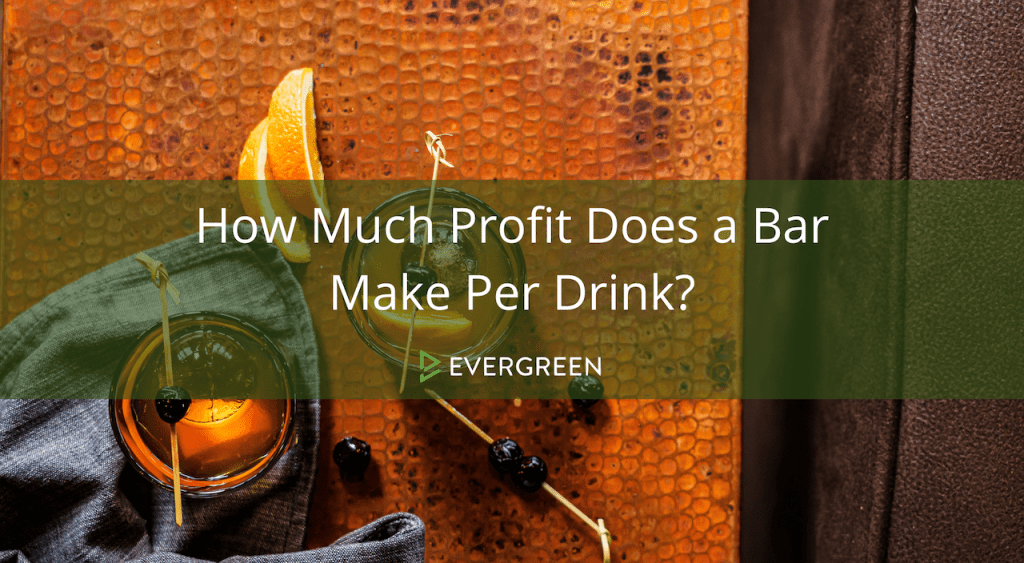How Much Profit Does a Bar Make Per Drink?

Profit margins are a crucial aspect of running a successful bar. In an industry where competition is fierce and profit margins can be slim, understanding the factors that affect profitability is essential.
Profit margins in the bar industry are influenced by various factors, including the cost of ingredients, overhead expenses, pricing strategies, location, happy hour and specials, inventory management, the quality of bartenders, marketing and branding efforts, and seasonality.
By understanding these factors and implementing best practices, bar owners and managers can maximize their profits while maintaining a high level of quality and customer satisfaction.
The Economics of a Drink: The Cost of Ingredients and Overhead Expenses
The cost of ingredients plays a significant role in determining the price of a drink and ultimately affects profit margins. The cost of alcohol, mixers, garnishes, and other ingredients can vary depending on the brand and quality. Bar owners must carefully consider the cost of ingredients when setting prices to ensure they cover their expenses while remaining competitive in the market.
In addition to ingredient costs, overhead expenses also impact profit margins. Overhead expenses include rent or mortgage payments, utilities, insurance, licenses, permits, and other operational costs. These expenses can add up quickly and significantly impact a bar’s profitability. Bar owners must carefully manage their overhead expenses to ensure they are not eating into their profit margins.
The Markup Game: How Bars Determine Their Prices
Bars determine the markup on their drinks based on various factors such as ingredient costs, overhead expenses, competition, target market, and desired profit margin. The markup is the difference between the cost of producing a drink and its selling price. Bars typically aim for a drink markup of 10-20% to cover their costs and generate a profit.
Different pricing strategies are used by bars to determine their prices. Some bars opt for premium pricing, where they set higher prices to create an image of exclusivity and luxury. Others may choose to offer lower prices to attract a larger customer base and increase sales volume. The pricing strategy chosen by a bar depends on its target market, competition, and overall business goals.
The Role of Location in Profit Margins
Location plays a crucial role in determining the profit margins of a bar. A bar’s location can impact its visibility, accessibility, foot traffic, and target market. Bars located in prime areas with high foot traffic and a large customer base are more likely to have higher profit margins. On the other hand, bars located in less desirable areas may struggle to attract customers and may have lower profit margins.
Choosing the right location for a bar is essential for maximizing profitability. Bar owners must consider factors such as demographics, competition, nearby businesses, parking availability, and overall ambiance when selecting a location. By carefully analyzing these factors and choosing a strategic location, bar owners can increase their chances of success and profitability.
The Impact of Happy Hour and Specials on Profitability
Happy hour and specials can have a significant impact on a bar’s profit margins. Happy hour is a period during which bars offer discounted prices on drinks and food items to attract customers during slower times of the day. Specials, on the other hand, are limited-time offers or promotions that can range from discounted drinks to themed events.
Happy hour and specials can help increase customer traffic and sales volume, but they can also affect profit margins if not managed properly. Bars must carefully calculate the costs associated with happy hour and specials to ensure they are still making a profit despite the discounted prices. Additionally, bars must consider the impact of happy hour and specials on their regular pricing strategy to avoid devaluing their products.
The Importance of Inventory Management in Maximizing Profits
Effective inventory management is crucial for maximizing profits in the bar industry. Inventory management involves tracking and controlling the flow of ingredients, supplies, and products to minimize waste, theft, and spoilage. By effectively managing their inventory, bars can reduce costs, improve efficiency, and increase profit margins.
Best practices for inventory management in the bar industry include implementing a point-of-sale system to track sales and inventory levels, conducting regular inventory audits to identify discrepancies and potential issues, establishing par levels for ingredients and supplies to ensure they are always in stock, and training staff on proper inventory management procedures. By implementing these best practices, bars can optimize their inventory management and maximize their profits.
How Bartenders Affect a Bar’s Bottom Line
Bartenders play a crucial role in a bar’s profitability. They are responsible for creating and serving drinks, interacting with customers, upselling, and managing the bar’s operations. The quality of bartenders can significantly impact a bar’s profit margins.
Hiring and training the right bartenders is essential for maximizing profitability. Bartenders should be knowledgeable about different types of drinks, have excellent customer service skills, be efficient in their work, and have the ability to upsell. By hiring and training skilled bartenders, bars can increase customer satisfaction, sales volume, and ultimately their profit margins.
The Role of Marketing and Branding in Increasing Profitability
Marketing and branding efforts play a significant role in increasing profit margins for bars. Effective marketing strategies can help attract new customers, increase brand awareness, and drive sales. Branding efforts can help differentiate a bar from its competitors and create a unique identity that resonates with its target market.
Some of the best marketing strategies for bars include social media marketing, influencer partnerships, hosting events or themed nights, offering loyalty programs or rewards for repeat customers, and partnering with local businesses or organizations for cross-promotion. By implementing these marketing strategies and investing in branding efforts, bars can increase their visibility, customer base, and ultimately their profit margins.
The Effect of Seasonality on Bar Profits
Seasonality can have a significant impact on the profit margins of bars. Many bars experience fluctuations in customer traffic and sales volume throughout the year due to seasonal factors such as weather, holidays, and tourism. Understanding and managing seasonality is essential for maintaining profitability.
Best practices for managing seasonality in the bar industry include analyzing historical data to identify seasonal trends, adjusting staffing levels and inventory accordingly, offering seasonal promotions or themed events, and diversifying revenue streams by offering food or hosting private events. When you effectively manage seasonality, bars can minimize the impact on their profit margins and maintain a steady level of profitability throughout the year.
Frequently Asked Questions About Drink Profits
- What is the average profit margin for a bar per drink?
The average profit margin for a bar per drink is around 15%. In other words, for every dollar spent on a drink, the bar makes around 15 cents in profit.
- What factors affect the profit margin for a bar per drink?
Several factors can affect the profit margin for a bar per drink, including the cost of ingredients, the price of the drink, the location of the bar, and the level of competition in the area.
- How much does it cost a bar to make a typical drink?
The cost of making a typical drink can vary depending on the ingredients used, but on average, it costs a bar around $1 to $3 to make a drink.
- What is the average price of a drink at a bar?
The average price of a drink at a bar can vary depending on the location and type of bar, but on average, a drink can cost anywhere from $5 to $15.
- How many drinks does a bar typically sell in a night?
The number of drinks a bar typically sells in a night can vary depending on the size of the bar and the level of business, but on average, a bar can sell anywhere from 100 to 500 drinks in a night.
- What are some ways a bar can increase its profit margin per drink?
Some ways a bar can increase its profit margin per drink include offering higher-priced premium drinks, reducing the cost of ingredients, and implementing cost-saving measures such as portion control and waste reduction.
Striking a Balance Between Quality and Profitability in the Bar Industry
Striking a balance between quality and profitability is crucial for long-term success in the bar industry. While it is important to maximize profit margins, it should not come at the expense of quality or customer satisfaction. When you leverage these best practices in areas such as inventory management, hiring and training bartenders, marketing and branding efforts, and managing seasonality, you’ll find the balance you want and create a thriving business.
Take your profits one step further with customizable print, digital, and website menus that wow your customers and keep them ordering.


